What Do I Need to Do before Buying a Household Wind Turbine
Two statements have a high probability of being true: (1) Electric prices will increase more quickly than the rate of inflation for several years, and (2) Small wind energy systems require a substantial investment of money and effort. So, is a home wind turbine right for me? If I want to install one, what do I need to do beforehand so I don't waste my money and time? This blog will answer your questions.
Step 1: Find ways to make your home more energy efficient
You wouldn’t buy a new furnace or air conditioner without first insulating your walls or ceiling. Nor should you invest in alternative energy without first reducing your total needs. Start by understanding the value of saving or generating one kilowatt-hour (kWh). Divide your total annual electric bill (minus the monthly customer charges) by the annual kWhs used. Deduct the monthly customer charges because neither conservation nor a wind energy system will offset the entire bill unless you totally disconnect from the grid. For a Midwest Energy residential customer, the customer charges are $156.00 per year. The resulting average price (excluding customer charges) is the value of saving or generating one kWh.
Then, conduct an energy audit of your home to identify ways to use less energy. Implementing energy efficiency measures will almost always offer a quicker return on your investment. Conservation may enhance the viability of a wind turbine project through a lower capital expense associated with a smaller turbine to serve the new lower energy load.
Step 2: Determine your site suitability and wind resource
Site suitability
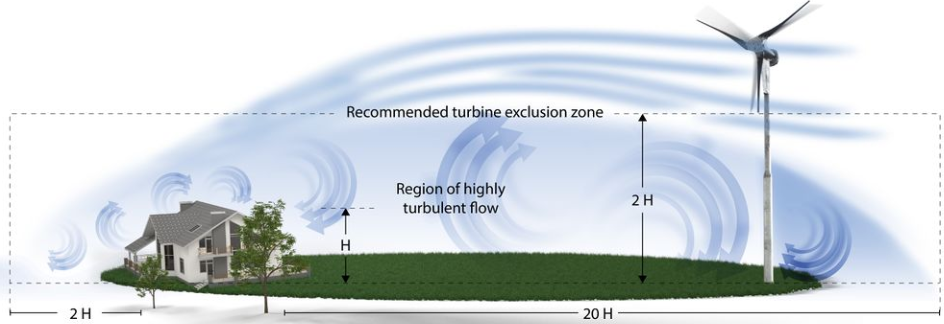
Most experts recommend that you have at least one acre of land if you are considering the installation of a small wind system. Smaller parcels may be suitable if adequate tower setbacks can be achieved.
Examine your site for potential turbulence. When wind flows around buildings, trees, and other structures in the landscape, it slows down or becomes turbulent. A wind turbine should be placed in a location where turbulence is minimized. A rule of thumb is that the turbine should be at least 30 feet higher than any obstacle within 300 feet. If growing trees are within this range, plan for their mature height. It also should be placed upwind of buildings and trees relative to the prevailing wind direction.
Wind resource
Wind speed varies from year to year, season to season, with the time of day, and with the height above ground. For a grid-connected wind system, an average annual wind speed of 10 mph is usually considered the cutoff. Most experts recommend average annual wind speeds between Class 2 (11.5 mph at hub height) and Class 4 (13.4 mph at hub height). Class 3 sites have average wind speeds of 12.5 mph at hub height. (Hub height is the distance from the ground to the center of the turbine rotor.)
A small increase in average wind velocity (V) results in a large increase in power produced. Energy output will increase by this ratio: (V2xV2xV2) divided by (V1xV1xV1). A site with an average wind speed of 15 mph contains nearly 54 percent more energy than a site with an average wind speed of 13 mph. The ideal wind resource has relatively stable high speeds. If trees and vegetation are permanently deformed because of constant wind exposure – known as “flagging” – you probably have a good wind resource to generate electricity.
Step 3: Determine your electricity consumption and choose the wind turbine accordingly
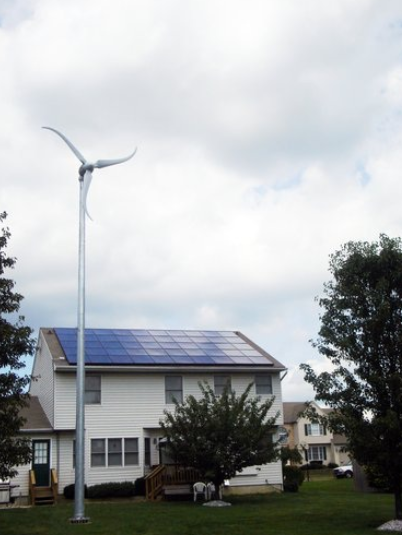 Energy output
Energy output
Midwest Energy can provide a copy of your historic electricity use or you can check your monthly statement. With this information, the dealer/installer can help you select a turbine size and tower height. Don’t assume the turbine should supply 100 percent of your needs. That question should be answered by an economic analysis.
Most small turbine manufacturers provide an estimated monthly energy output in kilowatthours (kWh) based on the wind resource you determined in Step 2. Experts caution consumers about taking these figures at face value, however. There are no industry-wide standards for comparing wind turbine performance.
A researcher at the National Renewable Energy Lab (NREL) developed this estimating formula that uses rotor size and wind speed: annual energy output in kWh = 0.01328 x rotor diameter (feet) squared x average wind speed (mph) cubed. That is, annual kWh = 0.01328 x D x D x V x V x V, where D = rotor diameter (feet) and V = average wind speed (mph).
Turbine features
Step 1: Find ways to make your home more energy efficient
You wouldn’t buy a new furnace or air conditioner without first insulating your walls or ceiling. Nor should you invest in alternative energy without first reducing your total needs. Start by understanding the value of saving or generating one kilowatt-hour (kWh). Divide your total annual electric bill (minus the monthly customer charges) by the annual kWhs used. Deduct the monthly customer charges because neither conservation nor a wind energy system will offset the entire bill unless you totally disconnect from the grid. For a Midwest Energy residential customer, the customer charges are $156.00 per year. The resulting average price (excluding customer charges) is the value of saving or generating one kWh.
Then, conduct an energy audit of your home to identify ways to use less energy. Implementing energy efficiency measures will almost always offer a quicker return on your investment. Conservation may enhance the viability of a wind turbine project through a lower capital expense associated with a smaller turbine to serve the new lower energy load.
Step 2: Determine your site suitability and wind resource
Site suitability

Most experts recommend that you have at least one acre of land if you are considering the installation of a small wind system. Smaller parcels may be suitable if adequate tower setbacks can be achieved.
Examine your site for potential turbulence. When wind flows around buildings, trees, and other structures in the landscape, it slows down or becomes turbulent. A wind turbine should be placed in a location where turbulence is minimized. A rule of thumb is that the turbine should be at least 30 feet higher than any obstacle within 300 feet. If growing trees are within this range, plan for their mature height. It also should be placed upwind of buildings and trees relative to the prevailing wind direction.
Wind resource
Wind speed varies from year to year, season to season, with the time of day, and with the height above ground. For a grid-connected wind system, an average annual wind speed of 10 mph is usually considered the cutoff. Most experts recommend average annual wind speeds between Class 2 (11.5 mph at hub height) and Class 4 (13.4 mph at hub height). Class 3 sites have average wind speeds of 12.5 mph at hub height. (Hub height is the distance from the ground to the center of the turbine rotor.)
A small increase in average wind velocity (V) results in a large increase in power produced. Energy output will increase by this ratio: (V2xV2xV2) divided by (V1xV1xV1). A site with an average wind speed of 15 mph contains nearly 54 percent more energy than a site with an average wind speed of 13 mph. The ideal wind resource has relatively stable high speeds. If trees and vegetation are permanently deformed because of constant wind exposure – known as “flagging” – you probably have a good wind resource to generate electricity.
Step 3: Determine your electricity consumption and choose the wind turbine accordingly
 Energy output
Energy outputMidwest Energy can provide a copy of your historic electricity use or you can check your monthly statement. With this information, the dealer/installer can help you select a turbine size and tower height. Don’t assume the turbine should supply 100 percent of your needs. That question should be answered by an economic analysis.
Most small turbine manufacturers provide an estimated monthly energy output in kilowatthours (kWh) based on the wind resource you determined in Step 2. Experts caution consumers about taking these figures at face value, however. There are no industry-wide standards for comparing wind turbine performance.
A researcher at the National Renewable Energy Lab (NREL) developed this estimating formula that uses rotor size and wind speed: annual energy output in kWh = 0.01328 x rotor diameter (feet) squared x average wind speed (mph) cubed. That is, annual kWh = 0.01328 x D x D x V x V x V, where D = rotor diameter (feet) and V = average wind speed (mph).
Turbine features
Once you know how much electricity you want your wind generator to produce, monthly or annually, you can look at the specifications of all turbines matching that output. Features to consider include the rotor diameter and the turbine’s revolutions per minute (rpm). Turbines with a lower rpm tend to be quieter and may last longer.
The amount of power that a turbine can produce is determined mainly by the diameter of its rotor and its tower height. The diameter defines the rotor’s swept area – the quantity of wind intercepted by the turbine. The larger and higher the swept area (the area through which the rotor blades spin) of the generator’s rotor, the more electricity it can produce if the rotor and generator sizes are properly matched. Swept area is the feature that will help you compare the potential output of one wind generator with another.
Tower height
One of the most common installation mistakes is mounting a wind turbine on a tower that is too short. Remember the rule of thumb for tower height: the wind generator should be at least 30 feet above any trees, buildings, or other structures within 300 feet. Are nearby trees still growing? Plan ahead! Taller towers result in higher wind generation because of reduced ground drag. An additional 40 feet on a tower can substantially increase the power available and return the incremental initial investment with greater energy generation revenues over the lifetime of the turbine. But, taller towers are more expensive.
An equation for estimating wind velocity at a different height is: V2 = V1 * (H2/H1)n , where n = 0.15 for short grass or fallow ground, and n = 0.20 for tall row crops or low woods. Remember that available energy varies with the cube of wind velocity. So for typical Western Kansas conditions, changing tower heights results in these differences in available energy compared to a tower 100 feet tall:
Look for turbines with a good track record and a good warranty – five years, if possible. Some experts believe that weight matters; in their view, the heavier the machine, the more robust it is. They say a heavy-duty wind generator is more likely to handle sites with stronger winds or turbulence than a lighter turbine. But lighter weight turbines typically have lower “cut-in” wind speeds and produce more power in lower winds.
Step 5: Determine estimated installed cost of system and calculate savings and payback
A very general rule of thumb for estimating the cost of a small wind system is $3 to $5 per installed watt ($3,000 to $5,000 per kW), but it can be higher, especially on smaller systems. The total installed cost is the cost of the wind generator and tower plus the cost of permitting, installation, and interconnection to the grid.
Step 6: Find a small wind system dealer/installer
You might want to start looking for an installer by asking any current small wind system owners in your area for references. In addition, contact the manufacturer of the wind turbine you are interested in for recommendations and suggestions for authorized installers.
Contact at least three installers for quotes for the equipment and installation. Be sure to ask for references, licenses and certifications, proof of insurance, and a performance bond. Question any quote that appears to be too high or too low. Some questions to ask when considering an installer are:
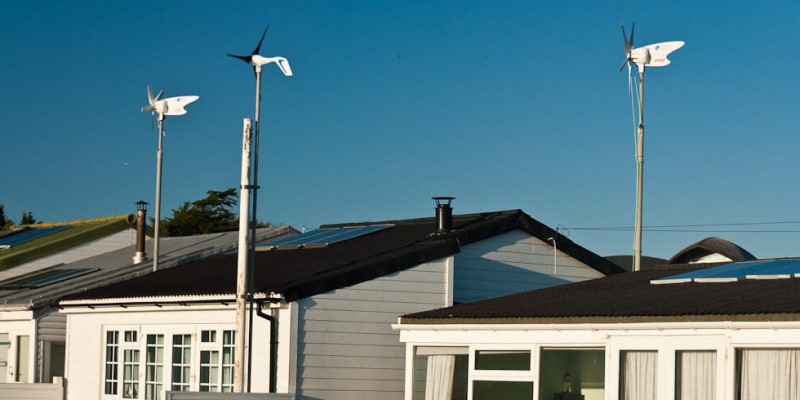
After knowing the above, I believe you have already made your judgment. If you are sure that you are ready to install and use a wind turbine for your home, we also offer inexpensive, high quality wind turbines in a variety of types and sizes. Buy a household wind turbine now! We also provide fast delivery and considerate after-sales service to help you utilize clean energy.
Tower height
One of the most common installation mistakes is mounting a wind turbine on a tower that is too short. Remember the rule of thumb for tower height: the wind generator should be at least 30 feet above any trees, buildings, or other structures within 300 feet. Are nearby trees still growing? Plan ahead! Taller towers result in higher wind generation because of reduced ground drag. An additional 40 feet on a tower can substantially increase the power available and return the incremental initial investment with greater energy generation revenues over the lifetime of the turbine. But, taller towers are more expensive.
An equation for estimating wind velocity at a different height is: V2 = V1 * (H2/H1)n , where n = 0.15 for short grass or fallow ground, and n = 0.20 for tall row crops or low woods. Remember that available energy varies with the cube of wind velocity. So for typical Western Kansas conditions, changing tower heights results in these differences in available energy compared to a tower 100 feet tall:
- 120 feet: add 8 to 10 percent to output at 100 feet
- 80 feet: deduct 10 to 11 percent from output at 100 feet
- 60 feet: deduct 21 to 24 percent from output at 100 feet
Look for turbines with a good track record and a good warranty – five years, if possible. Some experts believe that weight matters; in their view, the heavier the machine, the more robust it is. They say a heavy-duty wind generator is more likely to handle sites with stronger winds or turbulence than a lighter turbine. But lighter weight turbines typically have lower “cut-in” wind speeds and produce more power in lower winds.
Step 5: Determine estimated installed cost of system and calculate savings and payback
A very general rule of thumb for estimating the cost of a small wind system is $3 to $5 per installed watt ($3,000 to $5,000 per kW), but it can be higher, especially on smaller systems. The total installed cost is the cost of the wind generator and tower plus the cost of permitting, installation, and interconnection to the grid.
Step 6: Find a small wind system dealer/installer
You might want to start looking for an installer by asking any current small wind system owners in your area for references. In addition, contact the manufacturer of the wind turbine you are interested in for recommendations and suggestions for authorized installers.
Contact at least three installers for quotes for the equipment and installation. Be sure to ask for references, licenses and certifications, proof of insurance, and a performance bond. Question any quote that appears to be too high or too low. Some questions to ask when considering an installer are:
- Does the company have experience installing grid-connected systems? What models? Does the company use licensed and certified contractors? Is the company insured?
- Does the company have any consumer complaints, judgments, or liens against it?
- Will the company help with the applications required by the local building permitting agency and the utility for grid-connected systems?
- How much, if any, of the work will be contracted out?
- When will construction begin and how long will it take?
- What warranty is offered on the installation (covering workmanship for tower and turbine assembly, electrical, and foundation work)? Will company provide a performance bond?
- Does the company do service and repairs on the equipment?
- Will the company provide references of previous consumers?

After knowing the above, I believe you have already made your judgment. If you are sure that you are ready to install and use a wind turbine for your home, we also offer inexpensive, high quality wind turbines in a variety of types and sizes. Buy a household wind turbine now! We also provide fast delivery and considerate after-sales service to help you utilize clean energy.
Post a Comment:
You may also like:

Featured Articles
How Much Energy Will Wind Turbine ...
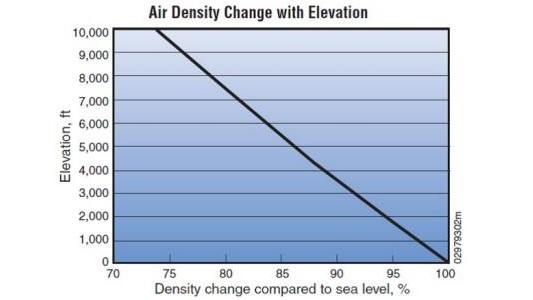 According to the AWEA Small Wind Turbine Performance and Safety Standard, the Rated Annual Energy of a wind turbine for ...
According to the AWEA Small Wind Turbine Performance and Safety Standard, the Rated Annual Energy of a wind turbine for ...
 According to the AWEA Small Wind Turbine Performance and Safety Standard, the Rated Annual Energy of a wind turbine for ...
According to the AWEA Small Wind Turbine Performance and Safety Standard, the Rated Annual Energy of a wind turbine for ...What Sounds Do Turbines Make?
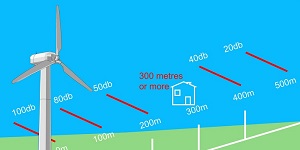 Modern low RPM (Revolutions Per Minute) turbines are very quiet, with sound levels usually below that of typical ambient noise in ...
Modern low RPM (Revolutions Per Minute) turbines are very quiet, with sound levels usually below that of typical ambient noise in ...
 Modern low RPM (Revolutions Per Minute) turbines are very quiet, with sound levels usually below that of typical ambient noise in ...
Modern low RPM (Revolutions Per Minute) turbines are very quiet, with sound levels usually below that of typical ambient noise in ...How do Wind Turbines Work?
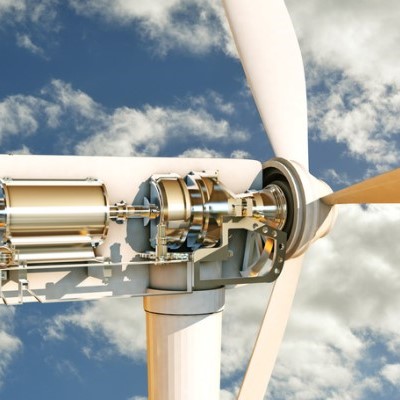 Wind turbines generate electrical power in the same way as all other generation technologies. The only difference is in the ...
Wind turbines generate electrical power in the same way as all other generation technologies. The only difference is in the ...
 Wind turbines generate electrical power in the same way as all other generation technologies. The only difference is in the ...
Wind turbines generate electrical power in the same way as all other generation technologies. The only difference is in the ...Does the Sound of Wind Turbines Affect ...
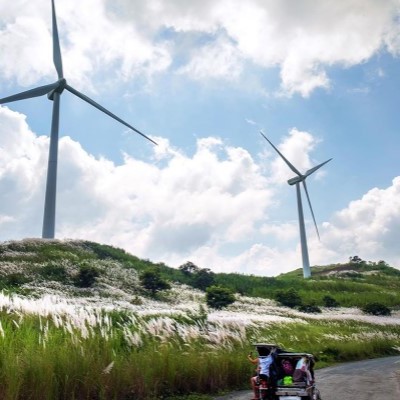 With respect to wind turbine noise, the one adverse impact that is supported by epidemiological data is an association between ...
With respect to wind turbine noise, the one adverse impact that is supported by epidemiological data is an association between ...
 With respect to wind turbine noise, the one adverse impact that is supported by epidemiological data is an association between ...
With respect to wind turbine noise, the one adverse impact that is supported by epidemiological data is an association between ...Is Wind Energy Practical for Me?
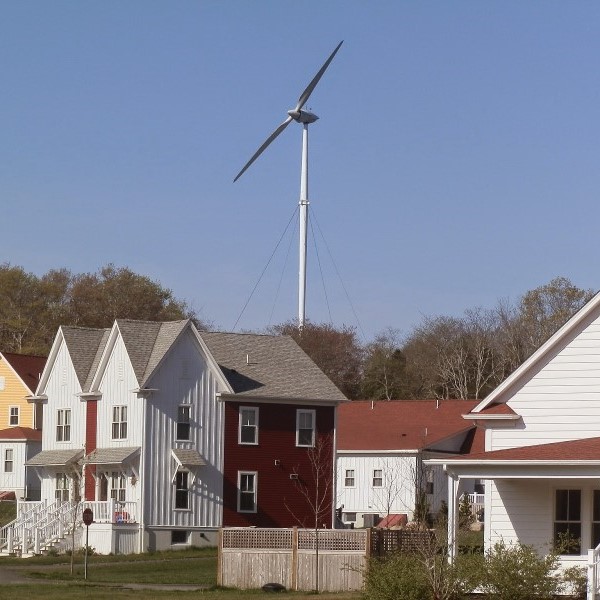 Can I use wind energy to power my home? More people across the country are asking this question as they look for a hedge ...
Can I use wind energy to power my home? More people across the country are asking this question as they look for a hedge ...
 Can I use wind energy to power my home? More people across the country are asking this question as they look for a hedge ...
Can I use wind energy to power my home? More people across the country are asking this question as they look for a hedge ...